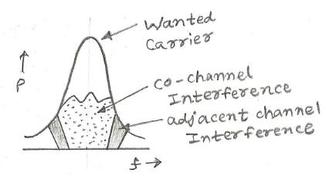Ec/Io vs Eb/No: Understanding the Difference in WCDMA
Advertisement
This page explains the difference between Ec/Io, Ec/No, and Eb/No concepts specifically within the context of WCDMA (Wideband Code Division Multiple Access) technology. We’ll also touch upon how these relate to general signal quality metrics.
It’s helpful to keep in mind that radio channels aren’t perfect. They introduce interference, which can be co-channel interference (from other signals on the same frequency), adjacent channel interference (from nearby frequencies), and other noise sources. This aggregate interference is often referred to as Io. Channels also introduce Additive White Gaussian Noise (AWGN) and cosmic noise, collectively represented as No.

The image above illustrates a simplified WCDMA transmit and receive system. Ec/No and Ec/Io are relevant when considering the signal-to-noise ratio before despreading, which is typically handled by a RAKE receiver in WCDMA. Let’s break down each term:
Ec/Io - Energy per Chip to Interference Power Ratio
- Ec/Io stands for Energy per Chip to Interference power ratio.
- It is measured before despreading. Think of “Ec” as the energy contained in each individual “chip” of the spread spectrum signal. “Io” represents the total interference power.
Eb/No - Energy per Bit to Noise Power Density Ratio
- Eb/No stands for Energy per Bit to Noise power density ratio.
- It is measured after despreading. “Eb” is the energy contained in each data bit, and “No” is the noise power density. Despreading helps to concentrate the desired signal’s energy while spreading the noise, improving the Eb/No.
Why are these terms important?
Ec/Io and Eb/No are valuable tools for RF and wireless system engineers when evaluating the performance of a wireless system. Generally, the signal-to-noise ratio (S/N), carrier-to-noise ratio (C/N), or Eb/No are used. Ec/Io, however, is more specific to WCDMA.
- S/N (Signal to Noise Ratio): Typically used before modulation.
- C/N (Carrier to Noise Ratio): Typically used after modulation.
(For a deeper dive, refer to information on C/N vs S/N ratio.)
The Relationship Between Ec and Eb
The key to understanding the difference lies in the spreading factor (SF) used in WCDMA. Let’s examine the relationship between Ec and Eb:

The figure shows the relationship between chips and bits in WCDMA. Notice that multiple chips make up a single bit.
Here’s the breakdown:
- Ec = Energy per chip = (A2 * Tc) / 2 (where A is amplitude and Tc is chip duration)
- Eb = Energy per bit = (A2 * Tb) / 2 (where A is amplitude and Tb is bit duration)
- Eb = Ec * SF
Where SF is the Spreading Factor. In the example image, the spreading factor is 8, meaning 8 chips make up a single bit. This relationship is crucial because it shows how the spreading process impacts the energy distribution and, consequently, the signal quality metrics.
 RF
RF

